The soundtrack of war is playing across the Iraqi frontline. The white noise of monotonous clinks and thuds, shots and mortar rounds hitting their intended and unintended targets alike. In the background, isolated shots ring out, hitting a target unknown.
This has become the soundtrack of their lives. It frames and defines the life of the men on the frontline.
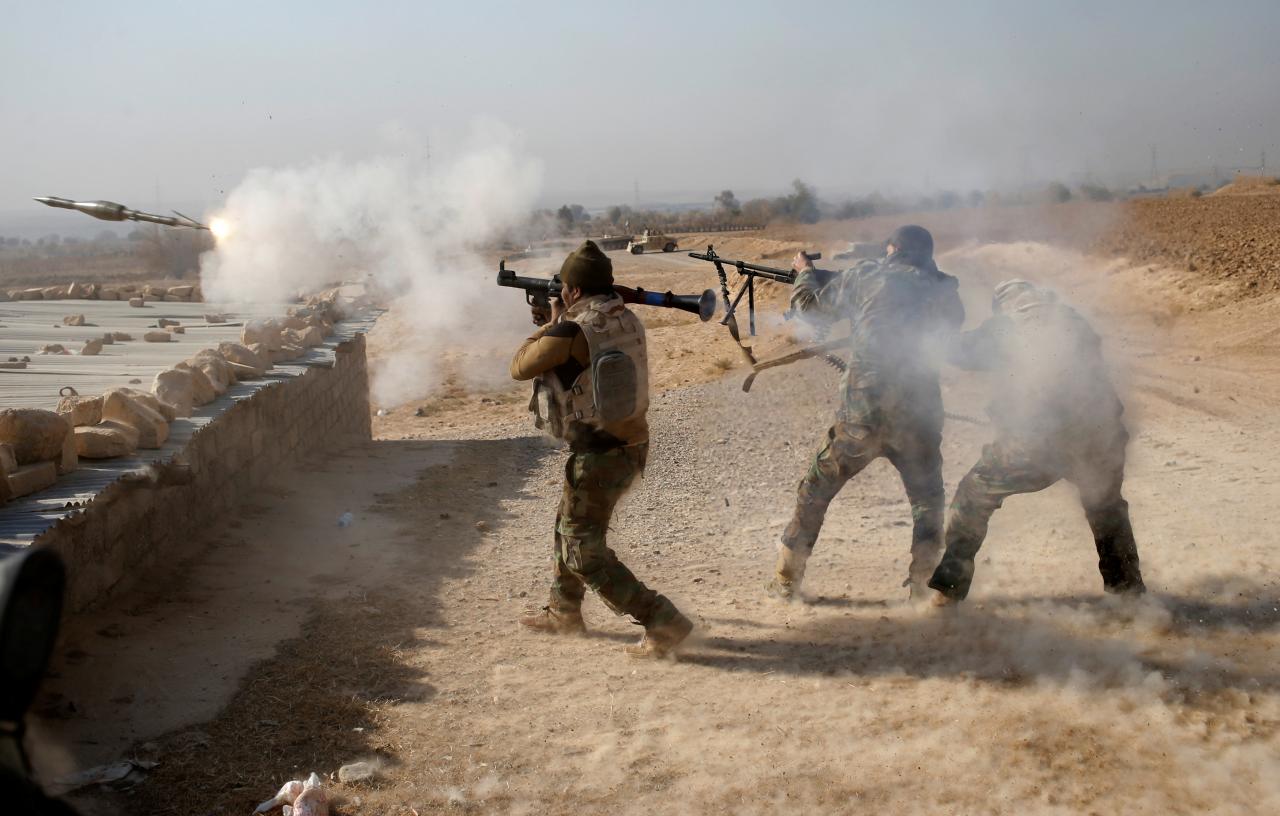
The enemy is within the gates; it is with our own luxury, our own folly, our own criminality that we have to contend.
-Marcus Tullius Cicero
Mosul took 9 months to liberate. For all of 2017, the men in the Iraqi Army fought over a city they would come to hate; not for the people who lived there, but the enemy that made Mosul its lair. A hatred for taking from them dear friends and comrades.
The war against the Islamic State has been savagely fierce. And just as victory in Mosul was declared, the might of the anti-Islamic State coalition set its sights on the next must have battlefront, Tal Afar. Being located near the Iraqi-Syrian border, merely 50 kilometers west of Mosul, the city and district of Tal Afar became an intricate part of the natural logistics and retreat route for the Islamic State.
On August 20th, the offensive began. The Iraqi government threw an immense number of its forces against Tal Afar. A force just short of 50,000 Iraqi army, air force, federal police, and members from the Shi’ite militia group Popular Mobilization Forces (PMF) were sent to the Tal Afar frontline. Against these 50,000 stood the Islamic State and affiliated militia groups, a force of 2,000.
Much to the dismay of the battleworn Iraqi forces, as the battle for Tal Afar district raged, it became a harsh reminder of Mosul. A soul grinding battle of urban warfare, against an entrenched enemy of battle tried recruits dreaming of heaven, jinnah, and high casualty rates, and an even higher toll on the civilian population. Some came to refer to the Tal Afar frontline as “the gates of hell”.
Our brave Armed Forces have liberated Tal Afar and the Iraqi flag is once again flying high in Nineveh province
— Haider Al-Abadi حيدر العبادي (@HaiderAlAbadi) August 31, 2017
Today, the city of Tal Afar is 90% controlled by the Iraqi Government, and the majority of the district’s outlining towns have also been captured. What sets the city of Tal Afar apart from Mosul, in addition to the expediency with which it was “captured” is that the city remains largely intact. Whereas Mosul, due to protracted fighting between two factions for whom the word surrender is just an alternative spelling of surrounded, was laid to waste.
The Iraqi Army, a society of mud-daubed, war weary fellows, continues to battle in and around Tal Afar, one of the last remaining major enclaves of the Islamic State. For every step forward in Tal Afar, a sacrifice must be made. On the khaki-dust colored cobblestones, and broken pavement of the streets throughout Tal Afar, the Iraqi Army continues its battle against the Islamic State. Here, the veterans that make up the bulk of the Iraqi military relive the fierce battles of Mosul with every step forward. Some even say that it is worse. Much worse. The notorious black uniforms of the Iraqi Special Operations units operating in the area turned into a sun faded blue, with stripes of white sweat stains, along with brown spots of dried blood.
The focus for these men now is to retake al-Ayadiya, a small town where hundreds of Islamic State fighters and affiliated militia members have gathered. Located 11 kilometers northwest of the city of Tal Afar, it had a pre-war population of more than 200,000. According to the United Nations more than 30,000 have so far fled since April. The Islamic State fighters come from lost battles across the country, intent on making a last stand for their belief in a caliphate. In al-Ayadiya, hundreds of Islamic State fighters have entrenched themselves in positions inside houses and buildings to prevent the advancements of the Iraqi government troops. This in turn has resulted in the advancing troops being forced into costly house to house battles.
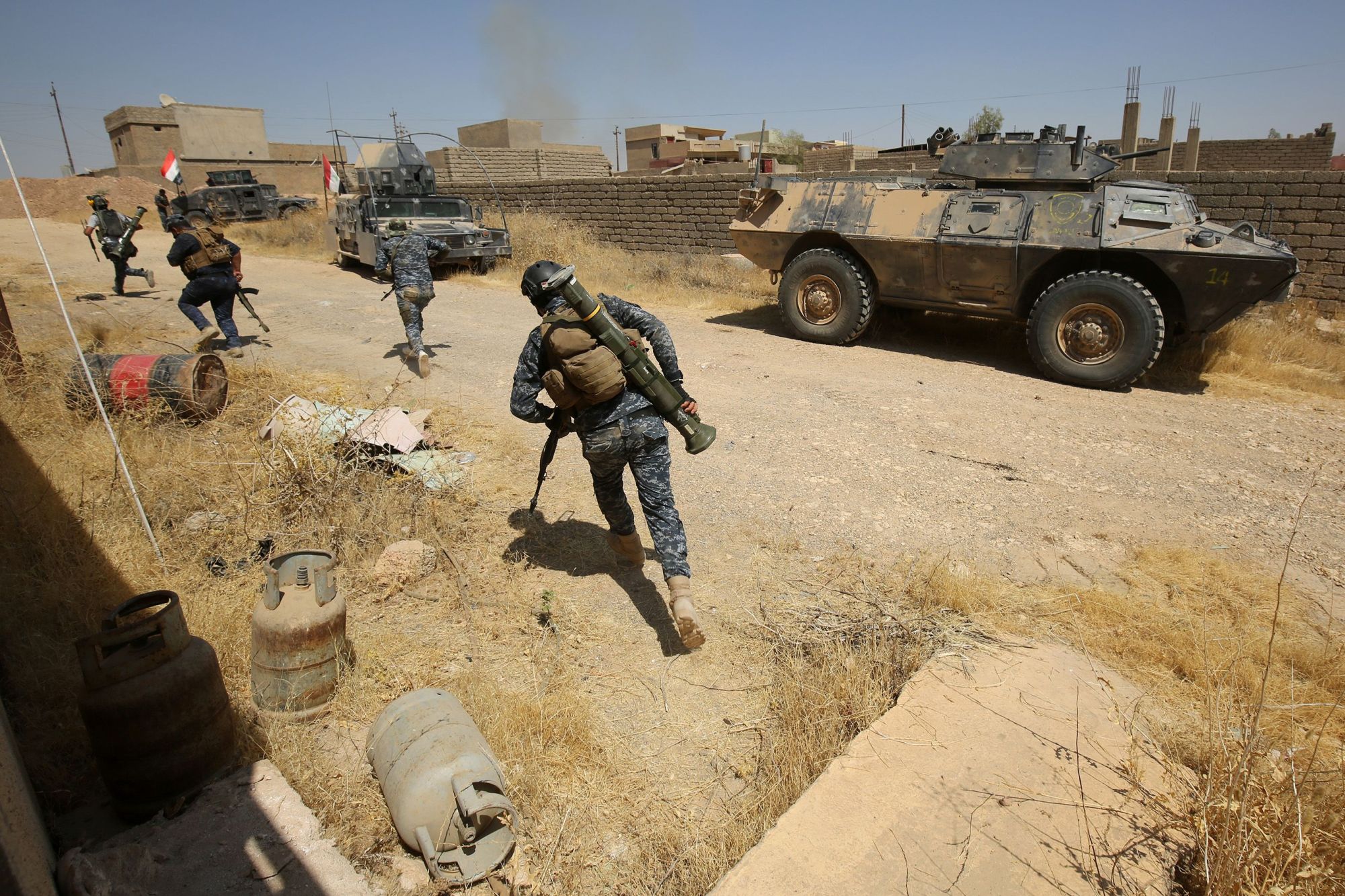
With an estimated 45% of the town under government control, Federal Police forces have reinforced their supportive positions. The remaining high buildings in areas under government control are being used by snipers providing overwatch to advancing forces.
The government offensive on al-Ayadiya, however, has reportedly ground to a halt as Iraqi forces are held back by the enemy’s entrenched positions. During earlier incursions the offensive was ahead of schedule, and the hope was that al-Ayadiya would be captured before the beginning of the Muslim holiday of Eid al-Adha. That hope was razed as August 30th came to an end. Faith is now being put towards a massive increase in artillery and airstrikes to soften enemy positions in order for ground forces to enter and break the enemy.
In anticipation of this, the Iraqi Army has dispatched an additional 3,000 men to the frontline. These reinforcements are expected to arrive in the first few days of September.
We have met the enemy and he is us.
-Walt Kelly
Kicking up Dust
The unit was patrolling a recently liberated area of the city of Tal Afar, passing through a open construction yard. Officially it was marked as orange to mark that, while it had been cursorily cleared, it was still considered a hot area of operations.
Construction yards and parking structures are never truly secure in urban warfare; such structures being ideal locations from which a small unit can prepare an ambush. They provide shade from the sun as well as poor visibility from on watchers, and the difficulty for air assets to spot them.
The captain’s unit consisted of all battle hardened men from the Iraqi Special Forces. The small unit consisted of 7 men from the Iraqi D-Company 36th Commando Battalion (36th D.Co CDO BN). A typical A-team. A larger backup B-team was patrolling using 3 up-armored vehicles just behind, on the main road.
The rocket, fired from a Soviet-designed Rocket Propelled Grenade launcher, an RPG-7, had upon its impact kicked up a dust cloud, enveloping the position of Captain Mamud and his men. With the dust cloud came the pressure, felt inside the chest and the head, from the explosion. The captain instinctually knew, just like any combat veteran would, that within seconds rounds would begin to hit their position. A lone rocket attack seldom happened. The enemy always followed up such a salvo with follow up salvos.
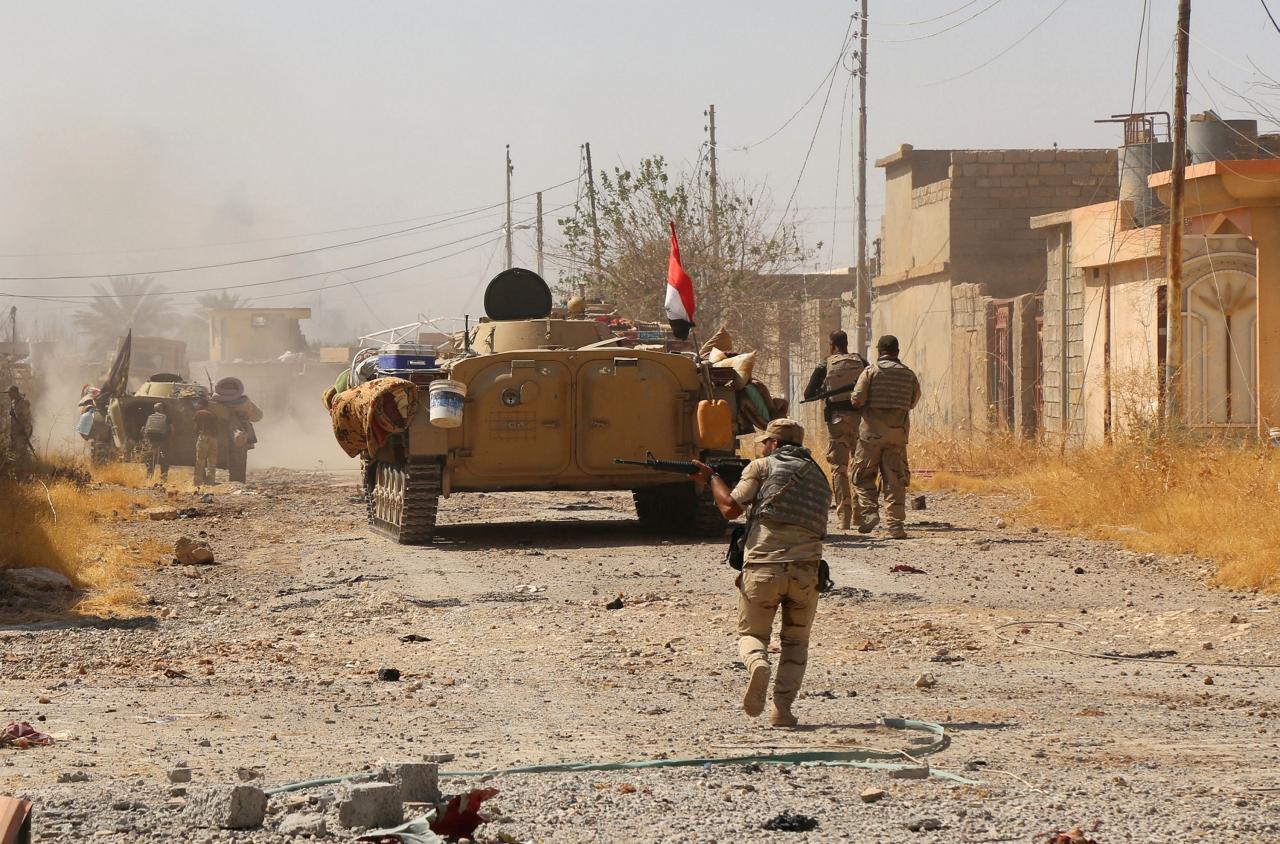
The enemy would usually have prepared the ambush scene using classic tactics, straight out of any modern day military field manual; positions making up a half moon circle on one of the expected flanks of the approaching victim.
If the enemy was even remotely skilled, and not just haphazardly putting an ad-hoc ambush together, they would have prepared the battleground to their advantage. The goal for them would be to create a so called kill box, or kill zone. The days where ambushes were carried out on an ad-hoc basis were mostly gone at this point; the enemy being lead by experienced men, often times with some variation of the same training as the captain, and his men, had.
Such an ambush usually revolved around the enemy having established multiple protected positions, along with a Ruchnoy Pulemyot Kalashnikova (RPK) set up, a faithful man of a peace loving religion looking down its iron sights. The RPK, a Soviet-designed light machine gun firing a 7.62x39mm round, is a modern day classic. Its fashionability never goes out of style. With a sleek woodstock and black accents, it goes well with the latest rage of jihadists and soldiers alike.
Usually bursts from an enemy position would be interspersed by sporadic, hopefully imprecise, RPG fire. If things are really bad, the enemy would also have access to an Degtyaryova-Spagina Krupnokaliberny (DShK), a Soviet-designed heavy machine gun firing a 12.7x108mm round, which would make short order of most covering positions that nature or the urban terrain might offer the ambushed men.
You must not fight too often with one enemy, or you will teach him all your art of war.
-Napoleon Bonaparte
The captain missed the days when the Jihadists he fought were ill-trained hoodlums, whose idea of tactics were best described as Playstation inspired. But generation upon generation of jihadists had grown up under war-like conditions. With government provided pay at times being infrequent, many had turned towards the easy, albeit amoral, business of joining the wide variety of militia groups throughout the region. They provided training, and experience, thus creating a mass of jihadists now as skilled and battle ready as the captain’s own men.
Where did #ISIS get FGM-148 #Jafflin ? !!! #TalAfar #Mosul #قادمون_ياتلعفر pic.twitter.com/q7l8ixtymX
— KLKAMASH (@klkamashiq) August 24, 2017
In the middle of a whirlwind dust cloud he screamed out the nearly needless order to take cover. Before him was a brick wall from an unfinished project which would have to suffice. The captain knew full well that taking cover behind anything inside the kill zone would be fraught with danger in and by itself. If the ambush scene is well prepared, the enemy will have chosen where they will engage their victim, and thus having prepared the grounds with explosives, making sure they control the access and type of cover available inside the kill zone.
But instinct dictates the evasion of immediate danger, and training does every bit to reinforce that. It being viewed as the better option to lay in cover, fraught in danger, than to stand and fall before getting a chance to return fire.
Throughout the frontlines against the Islamic State, from Syria to Sinai, to Baghdad, all the way to Yemen, it is apparent that the group is well versed in the notion of preparing their ambush scene. In Deir Ezzor, Raqqa, and Mosul, whole buildings came tumbling down onto the approaching would-be liberators. The buildings having been prepared with explosives inside the walls to blow at the order of the local Islamic State commander. All who fight on the frontlines know what it means to enter terrain that has until recently been firmly held by an enemy of the Islamic State’s caliber.
The captain could hear, even feel, the heavy thuds of the rounds hitting the wall, sending shards of plaster and brick flying. From the sound of the impacts, and from the fact that the rounds weren’t tearing right through the dubiously built wall, the captain knew that he was facing, for now, 7.62mm rounds. Good news, at least.
His radioman, always present and always shadowing the captain, was already radioing in the contact report, as per present Iraqi Army Standard Operating Procedure (SOP). He requested assistance from nearby available ground forces as well as central command to redistribute available air assets to the construction yard.
The unit had entered the construction site through multiple ingresses and with regulation space between them, to ensure that if an RPG struck, or someone opened fire, the immediate casualty rate would be as minute as possible. All done by the book. Unfortunately, following the book, while a good idea, also meant that the captain’s forces were now scattered over the front of the construction yard. At least three men were not answering their radios.
To the captain’s left he could see at least three of his men covering behind a big sandpile. Seemingly, the ambushers had not completed the half-moon circle entirely, or else his men by the sandpile would be getting shredded by fire coming in from their undefended side. To his rear right, he could see where the initial RPG had struck.
Two of his men lay there. One was still moving, but was obviously wounded, laying face down. Blood ran from his left shoulder. His protective carrier vest was torn. It not being the right time for emotions, being merely the time for thrilling heroics, the captain counted off two out of the three unaccounted men from his mental list. The third would be found, and had probably already taken cover, preparing to fire back once an opportune target presented itself.
As is known, time is relative. A soldier stuck in the middle of an ambush will feel time fleeting, while it stands still. Nanoseconds feeling like seconds, seconds feeling like minutes. The only real time stamp in the battle framed mind is that of the thuds of rounds impacting.
The captain ordered, loud and clear, to return time to the enemy. To return fire. Alas, only the captain himself, and his radioman, were in a position that was advantageous to do so. The men behind the sandpile having no clear line of sight of the enemy began moving to the sides, to take part in the team’s timely response.
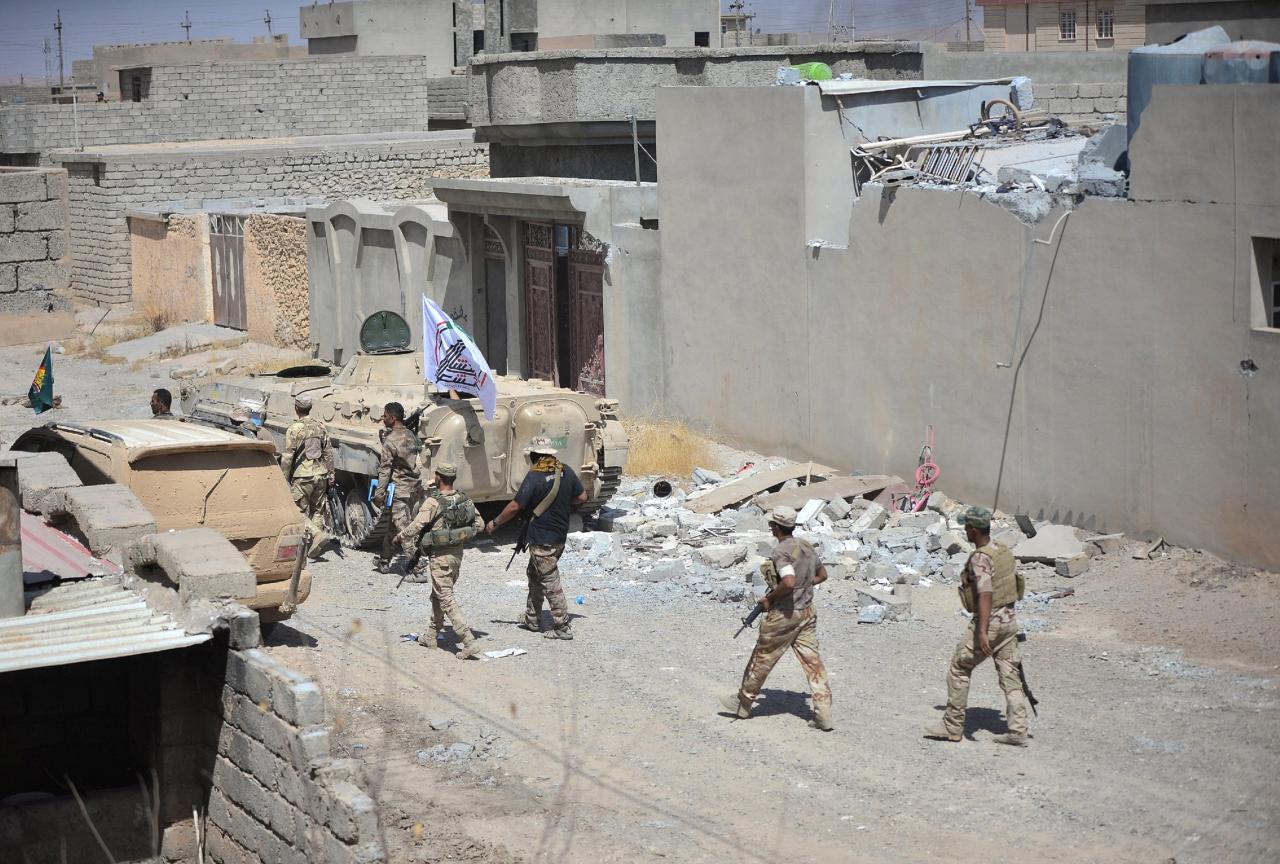
The captain began putting down single-round shots against the only enemy position he could see. His radioman seemingly had already expended his first magazine, as he was frantically reloading his rifle. Again, time was in flux. The time it took the captain’s radioman to reload his rifle felt like an eternity, but was actually a matter of seconds.
Over the radio they heard the call from B-team, stating that they were about to engage the enemy from the street, while flanking them from behind. Over the captain’s head, standing 20 meters away on the street, one of the up-armored patrol vehicles began firing its M249 machine gun in bursts against a position that the captain could not see from his vantage point.
With the relative safety of knowing that his friends had his back, the captain afforded himself a mere nanosecond worth of a smile. With the speed of a mind bristling with adrenaline and sleep deprivation, he thought that this would be something to remember.
That smile, and thought, would be the captain’s last.
Mere seconds later an Improvised Explosive Device (IED) exploded. It had been hidden in the sandpile. The explosion was large enough to sway the up-armored vehicle on the road, and to disintegrate the bodies of the captain and his men.
Silence fell over the construction yard.
For those alive, it felt like an hour without sound, in the timespan of a minute. In reality, 10 seconds passed before the up-armored vehicle began firing on the enemy position inside a skeletonized building. The jihadists were already evading out from the back, their mission of destruction and death having been successful.
In the absence of sound, as the M249 died down, a dog gone mad barks. It is one of the lucky ones, its madness protecting it from the worst – understanding the savagery that is man. The dog could escape, crawl through sewers, and sneak past all to the freedom of the desert. Away from the Gates of Hell.
Once al-Ayadiya is captured, the Iraqi Army will advance towards the next Islamic State enclave. For the individual soldier on the ground, his existence appears like nothing but a permanent existence in war, leaving the mind to wander towards the Greek mythological tragedy of the curse befallen upon Sisyphus. For the lot of the soldier at war against the ilk of the Islamic State’s is one of never changing, always different, terror.
Tal Afar in Context
The city and district of Tal Afar has historically been mainly a Shia Turkmen controlled town, and thus a target for Sunni militia groups. Since the Iraq War in 2003 it has played a vital role as a logistical gathering point for both Shia and Sunni insurgency groups.
In September, 2004, the US Marine Corps, 3rd Brigade, 2nd Infantry Division, along with Iraqi Security Forces, entered Tal Afar with the intent of dismantling the growing insurgency presence. For two weeks fierce battles tore the city asunder, before the situation became politically unsustainable. Turkey, a regional heavyweight and NATO ally, demanded that offensive military operations in Tal Afar end immediately. This after 58 ethnic Turkmen civilians were caught in the middle of the fighting, and died.
The Marines surged through Tal Afar, and overtly crushed the insurgency presence, leaving the city in the control of Iraqi security forces.
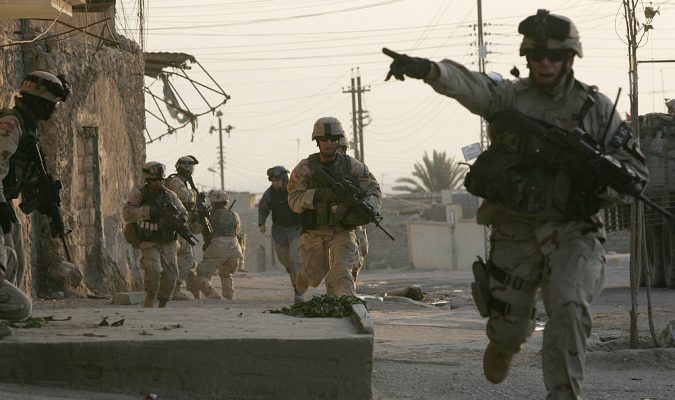
The Iraqi government remained in control of the area until the insurgency surge, lead by al Qaeda in May 2005, pushed them out. This resulted in the US-led coalition engaging in Operation Restoring Rights, a massive operation under the command of Colonel H.R. McMaster. ORR featured 3,500 US troops from the US Army 3rd Armored Cavalry Regiment, the 325th Airborne Infantry Regiment, and the 82nd Airborne Division, along with 5,000 Iraqi soldiers from 3rd Division of the Iraqi Security Forces. Between September, 2005, and October, 2005, the operation saw the deaths of 157, and the capture of 683 insurgents. In turn, the US lost four, and the Iraqis lost fifteen, soldiers.
Officially, the operation was carried out between September 1st and September 18th. In actuality, the troops remained active and operating under the operation’s perimeters until October. This was to create a secure environment for the October 2005 referendum, which enabled the Iraqi national elections in December 2005 to take place.
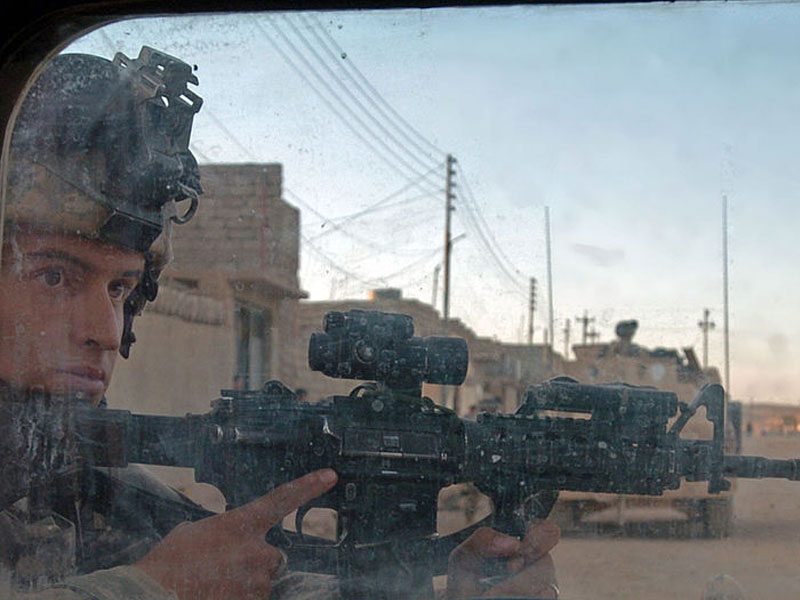
The operation was largely deemed a success, and saw Colonel McMaster promoted to a direct adviser to General David Petraeus in the planning and execution of the 2007 troop surge.
The story of Tal Afar gives me confidence in our strategy, because in that city we see the outlines of Iraq we’ve been fighting for.
-President George W. Bush
By mid 2006, Tal Afar had become a centerpiece in the rise of sectarian violence between Iraqi Shiite and Sunni Muslims. Previously, the two groups had a unifying enemy to fear and hate in the form of Saddam Hussein’s Baath party. In the absence of this, the whole nation quickly descended into unabashed violence from all, against all.
In Tal Afar the Sunni groups mobilized both militarily as well as politically against the Shia dominated Iraqi government and security forces. Mass numbers of Sunnis were moving to Tal Afar, to create a safe Sunni controlled enclave amidst the surge in sectarian violence.
The best weapon against an enemy is another enemy.
-Friedrich Nietzsche
By October, 2006, a bombing carried out by Shia militants saw the deaths of 14 people, 10 of which were Sunni civilians and four Iraqi soldiers. Another bomb a month later killed 22 and wounded 30. During 2007 the area saw some of the heaviest civilian tolls as a result of Shia insurgency bombings in Iraq. At least 300 civilians died, many of which were children. 2008 held much of the same. Tal Afar’s Sunni majority wearily began feeling that the Shia dominated government in Baghdad was at best uninterested in helping, and at worst directly culpable.
2009 saw the death of hundreds more as a result of the ongoing sectarian rift, culminating in an October attack against the Sunni Taqua Mosque during Friday Prayer. A gunman opened fire inside the mosque, and detonated a suicide belt, killing 15 and injuring more than a 100.
Throughout the years following, the area was again a major hub for Sunni insurgency groups, such as the various variations of al Qaeda, to gather and at times find safe haven. This created a climate that was ideal for the coming of even more extreme Salafist-Sunni movements to use Tal Afar as a launching point for their operations throughout Iraq.
In 2010, Abu Suleiman al-Naser, the “war minister” of the then al Qaeda affiliated Islamic State of Iraq (Dawlat al-ʿIraq al-Islāmiyyah), warned Shias of “dark days soaked with blood“. Abu Suleiman had just days earlier replaced Abu Ayyub al-Masri, who had been killed during a joint American and Iraqi special operations operation outside of Tikrit, and was in dire need of impressing his cohorts by sending ripples of violence through Iraqi society. Also present during the Tikrit operation which saw the death of al-Masri was al-Baghdadi, who at the time was also believed to be dead, only to emerge weeks later. This was seemingly with the intent of surpassing his former masters inside the al Qaeda umbrella organization through the creation of the Islamic State a few years later.
As the Islamic State emerged as an al Qaeda breakaway entity a few years later, going from being a subsidiary to a major opponent, it quickly descended upon Tal Afar. By June 2014, after a two-day battle, it was in absolute control of the area. The group would retain definite control until August, 2017, when the Iraqi military, with Kurds and the international anti-Islamic State coalition in support, turned its attention towards Tal Afar.
John Sjoholm, Lima Charlie News
John Sjoholm is Lima Charlie’s Middle East Bureau Chief, Managing Editor, and founder of the consulting firm Erudite Group. A seasoned expert on Middle East and North Africa matters, he has a background in security contracting and has served as a geopolitical advisor to regional leaders. He was educated in religion and languages in Sana’a, Yemen, and Cairo, Egypt, and has lived in the region since 2005, contributing to numerous Western-supported stabilisation projects. He currently resides in Jordan. Follow John on Twitter @JohnSjoholmLC
Lima Charlie World provides global news, featuring insight & analysis by military veterans, intelligence professionals and foreign policy experts Worldwide
For up-to-date news, please follow us on twitter at @LimaCharlieNews
In case you missed it:

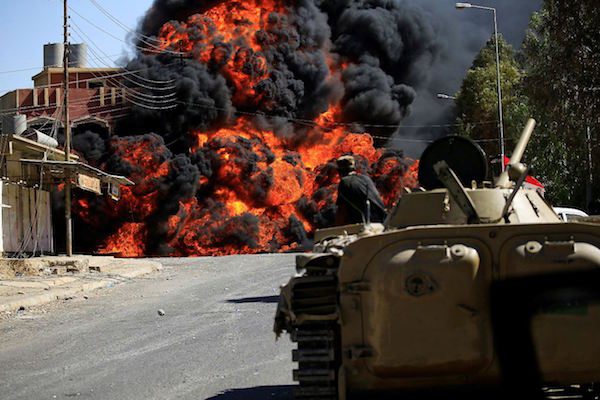
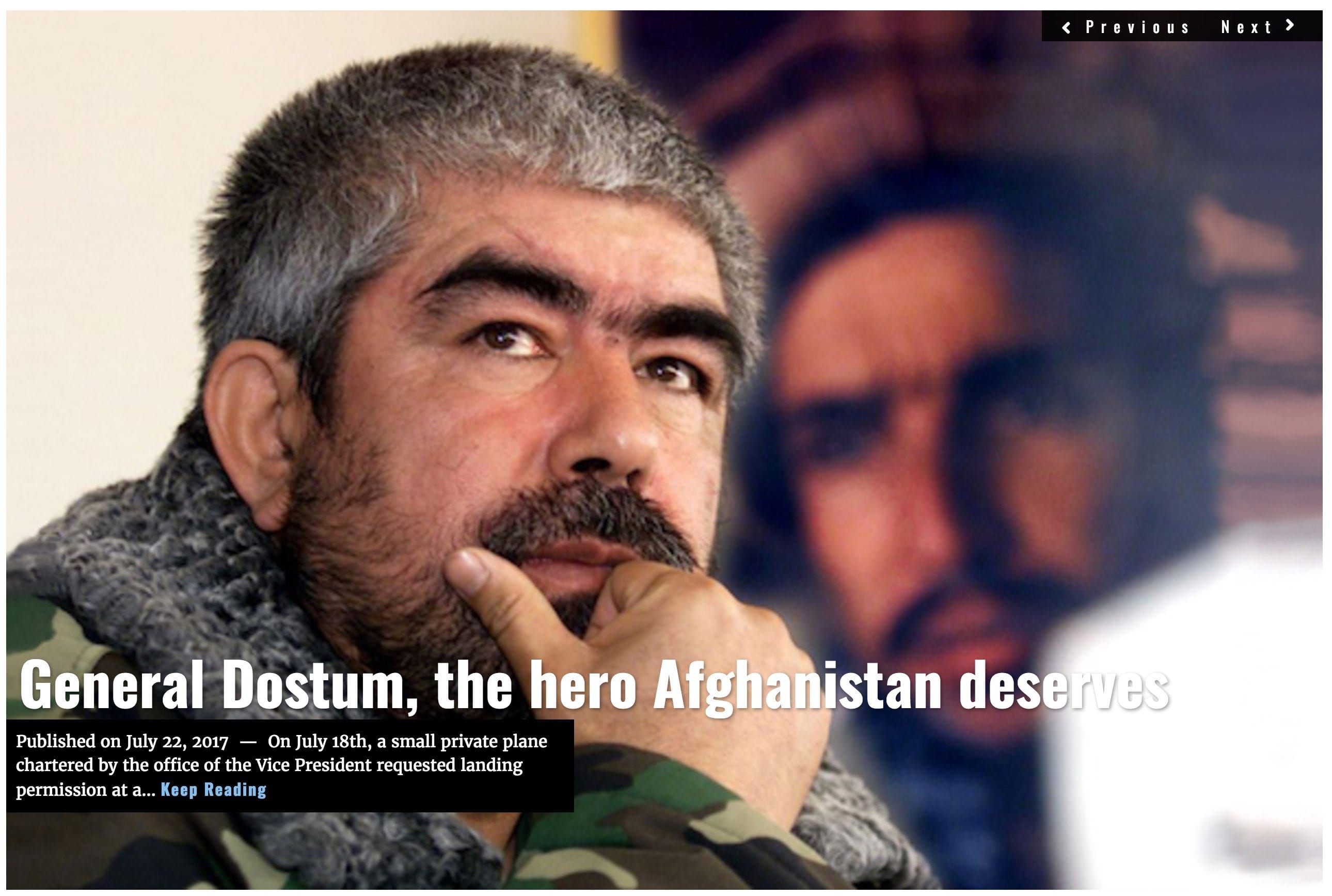

![Image The Philippines, U.S., China make for a tough week at the International Criminal Court [Lima Charlie News]](https://limacharlienews.com/wp-content/uploads/2019/03/ICC-bad-week-480x384.png)
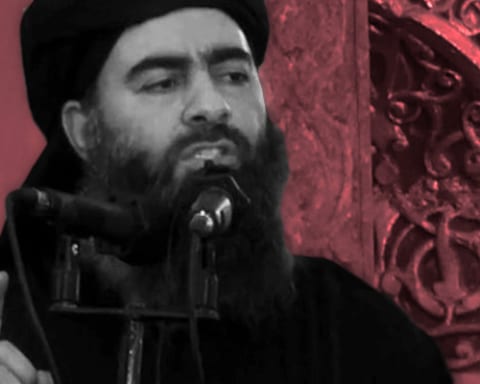


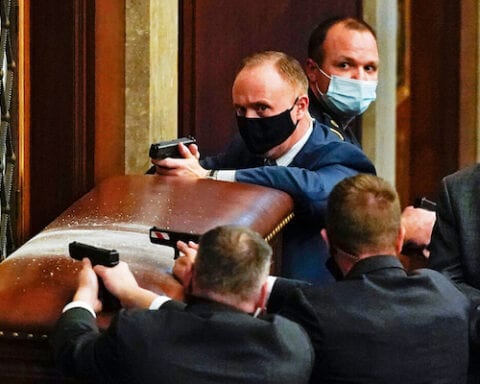

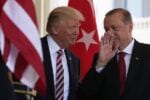
![Image The Philippines, U.S., China make for a tough week at the International Criminal Court [Lima Charlie News]](https://limacharlienews.com/wp-content/uploads/2019/03/ICC-bad-week-150x100.png)